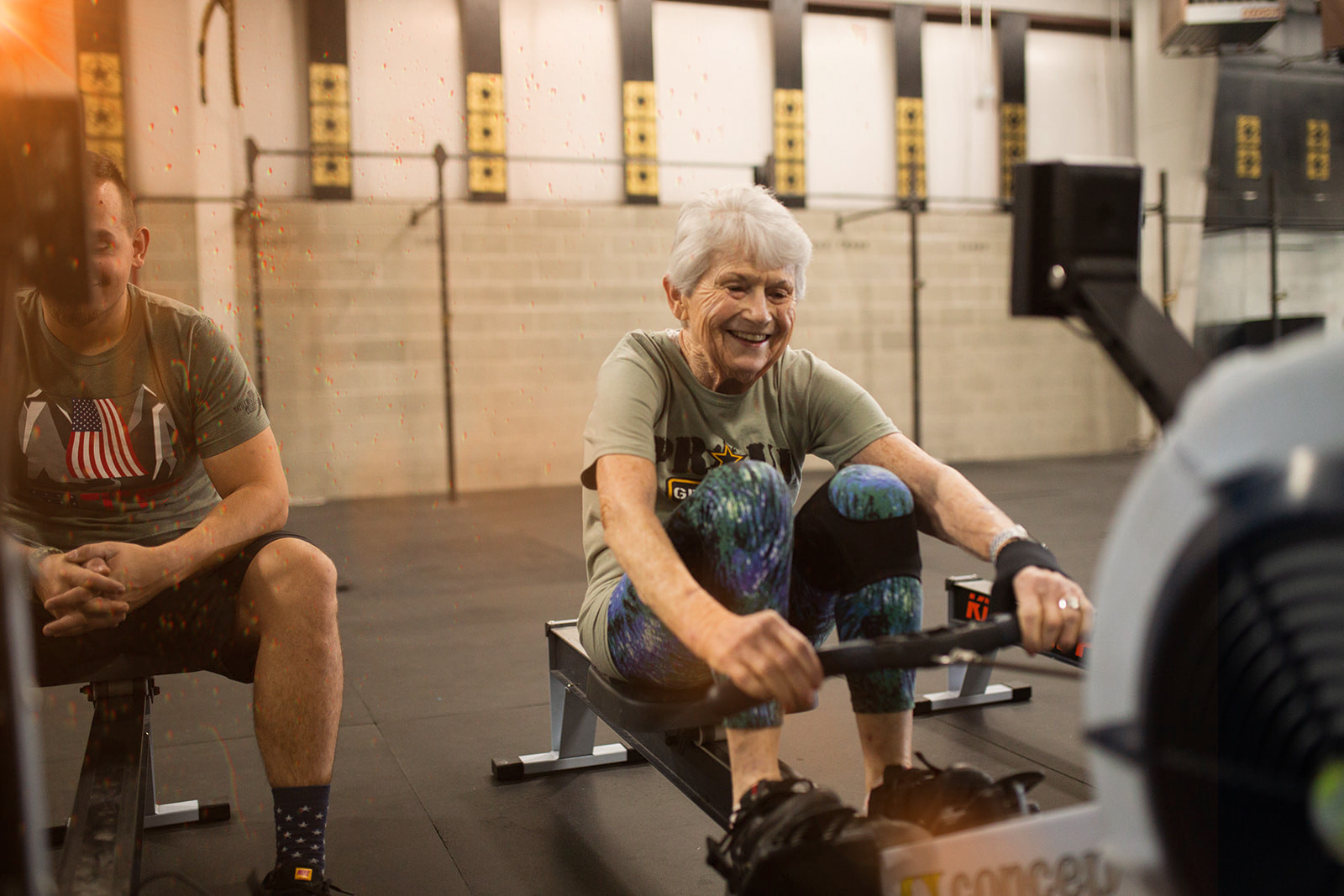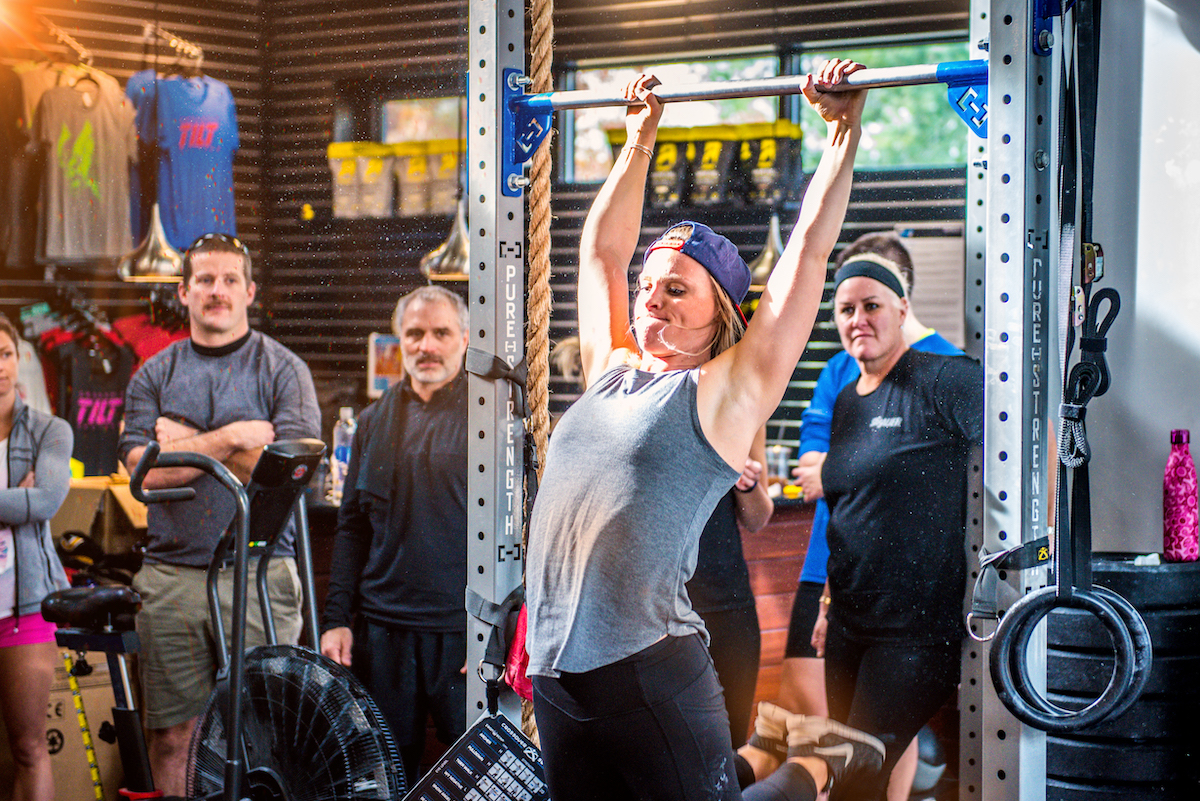Last week, we presented this formula as a framework for explaining the “magic” of CrossFit:
Methodology + Ethos (Coach + Community) = CrossFit
Next week, we’ll begin to dive into the elements of that formula, but first, we need to unpack why we can say CrossFit is grounded in science but feels like magic.
The Magic and Science of CrossFit
For a long time, magic and science have both been common elements in the CrossFit lexicon.
Back in 2005, CrossFit Founder Greg Glassman said, “The magic is in the movement, the art is in the programming, the science is in the explanation, and the fun is in the community.”
The results we experience when we put in the work and commit to CrossFit’s fitness recommendations feel like magic. An 80-year-old who performs squats and sled pushes with athletes in their 20s may look like they’ve found a fountain of youth or some other such sorcery to someone who is unfamiliar with our program and our community, though we know the formula that got them there. We have transformed the paradigm for aging — we’ve witnessed countless transformations, both mental and physical in nature. And we’ve heard from scores of athletes who have used CrossFit to slow, combat, or reverse a range of chronic diseases they believed would result in their inevitable decline. Such stories may seem anecdotal and even magical in isolation, but collectively, they supply the data that shows the CrossFit formula works.
.

Pat, 80, rows at CrossFit Utah — Photo by Jake Dickerson
Bad Science
CrossFit’s results feel like magic only where we have outpaced the science that would explain them. It often takes years for the scientific community to set up experiments to test what we are doing and affirm what we already know.
For example, in the early 2000’s, as science backed by the food industry decried fat and touted the benefits of cereals, grains, and other refined, processed carbohydrates as part of a healthy diet, CrossFit was advocating for a higher-protein, higher-fat, and lower-to-moderate carbohydrate plan. The validity of CrossFit’s nutritional recommendation to produce elite levels of fitness and stave off chronic disease has been supported for years by the results (data) of thousands of CrossFit athletes. And now, at last, conventional scientific research is agreeing with CrossFit’s nutrition advice.
.

CrossFit recommends eating meat and vegetables, nuts and seeds, some fruit, little starch, and no sugar. Learn more about CrossFit’s nutrition recommendations in the CrossFit Nutrition 1 Course.
Similarly, 20 years ago, CrossFit debunked a popular recommendation from exercise science that the best way to get fit was two or three days per week of low-intensity cardio combined with two or three days per week of strength training, which could be done with isolation exercises on machines. Again, thousands of CrossFit athletes recording their workouts all over the world provided measurable, observable, and repeatable data demonstrating the superiority of CrossFit’s methodology in creating fitness over the cardio-bodybuilding split. Today, exercise science is replete with studies confirming the value of programs based on functional movements (deadlifts, presses, squats, etc.) and intensity for developing fitness over the machine-based isolation movements and lower-intensity programs so popular in commercial gyms.
Real Science
Real science starts with a testable hypothesis followed by an experiment to test this hypothesis. Through experimentation, measurable, observable and repeatable data can be used to support or discredit the original hypothesis. If you do CrossFit, and you record your workouts and track your nutrition, you’re participating in a massive experiment designed to test the hypothesis of how to optimize human fitness and health.
In CrossFit, we don’t get our results from a lab. Instead, the data that guides our training and nutrition philosophy is collected from countless athlete workouts where time, weight, distance, and reps are measured.
The measurement and recording of workouts is part of our culture and makes CrossFit a giant, efficient scientific undertaking conducted in garages, affiliates, and parks all around the world. Every recorded workout is its own experiment that provides a data point. It is this measurable, observable, and repeatable data collected from tens of thousands of athletes that has allowed us to prove the value of intensity, functional movements, variance, and whole foods eaten in the proper amounts for optimizing fitness and health.
.

Jennifer Reichert Reid at CrossFit Tilt Waltham — Photo by Patrick Quinn-Paquet
Another benefit of CrossFit’s scientific approach to fitness is that it allows for the evaluation of any method that claims to help increase fitness and health. Put simply, we are an evidence-based program. That is, if someone can prove — with data — that their methods improve work capacity today and over the long term in a novel way not practiced by CrossFit, then we will absorb these methods into our program. And because CrossFit was created as an open-source model, our best practices permeate the community and are readily implemented by our athletes to be further refined by ongoing experimentation. This rigorous, scientific testing of our methods allows CrossFit to deliver what really works while eliminating or refuting practices that just don’t measure up.
As we continue to gather data from our enormous sample size of athletes’ workouts and lifestyle habits (nutrition, sleep, stress management, etc.), we will ultimately gain the ability to predict the outcome of an athlete’s specific combination of lifestyle and exercise. Even more valuable, we will be able to predict the mixture of lifestyle factors and exercise that delivers the best quality of life (fitness) and the best quantity of life (longevity). That’s how the real science CrossFit practices can influence our actions and help us achieve our health and fitness goals.
Millions of CrossFit athletes performing and recording their workouts all over the world have provided measurable, observable, and repeatable data that demonstrates the efficacy of our program and the consistency of our results.
— Article on CrossFit.com by Stephane Rochet with Nicole Carroll and Melissa Yinger
